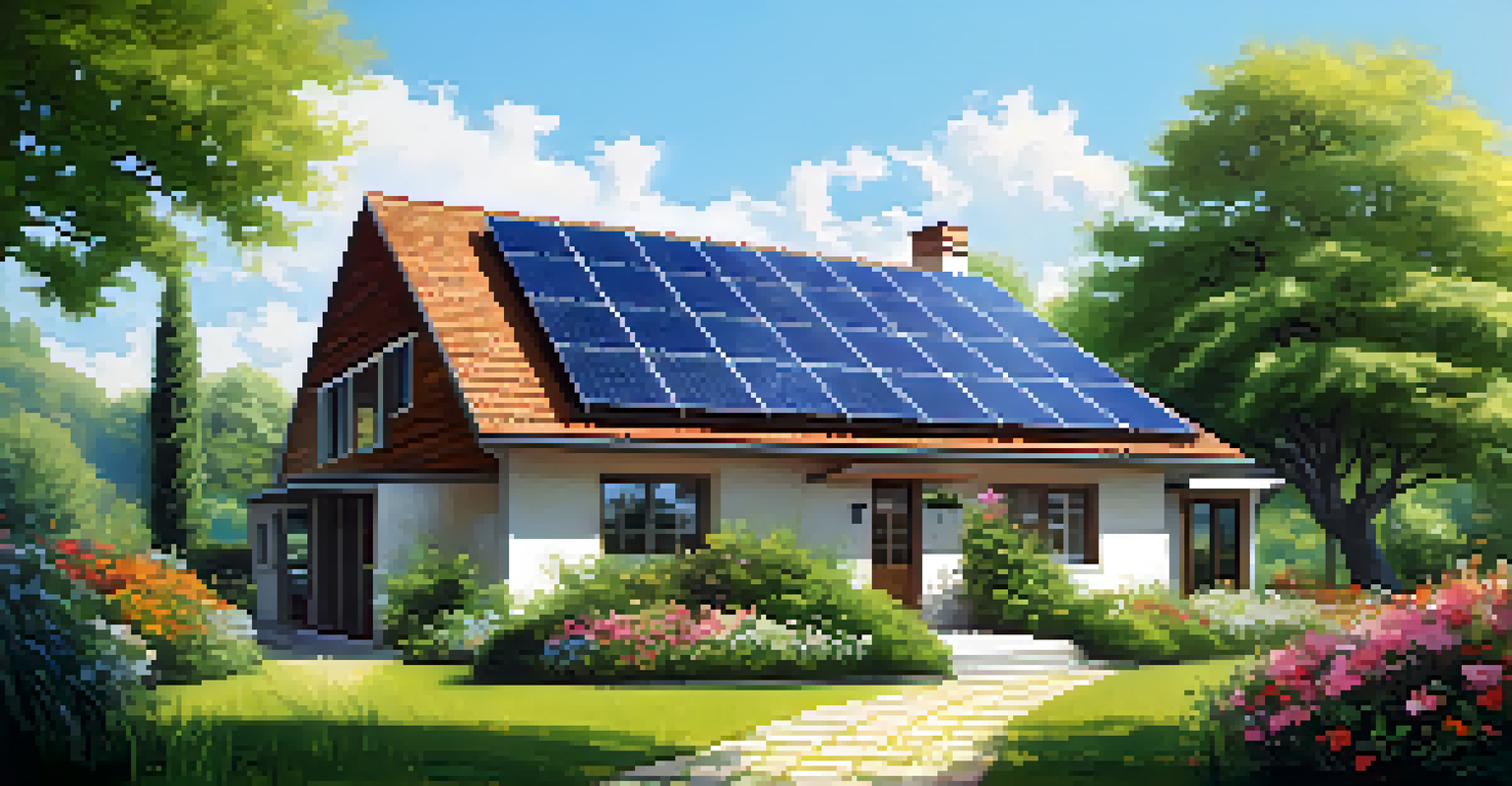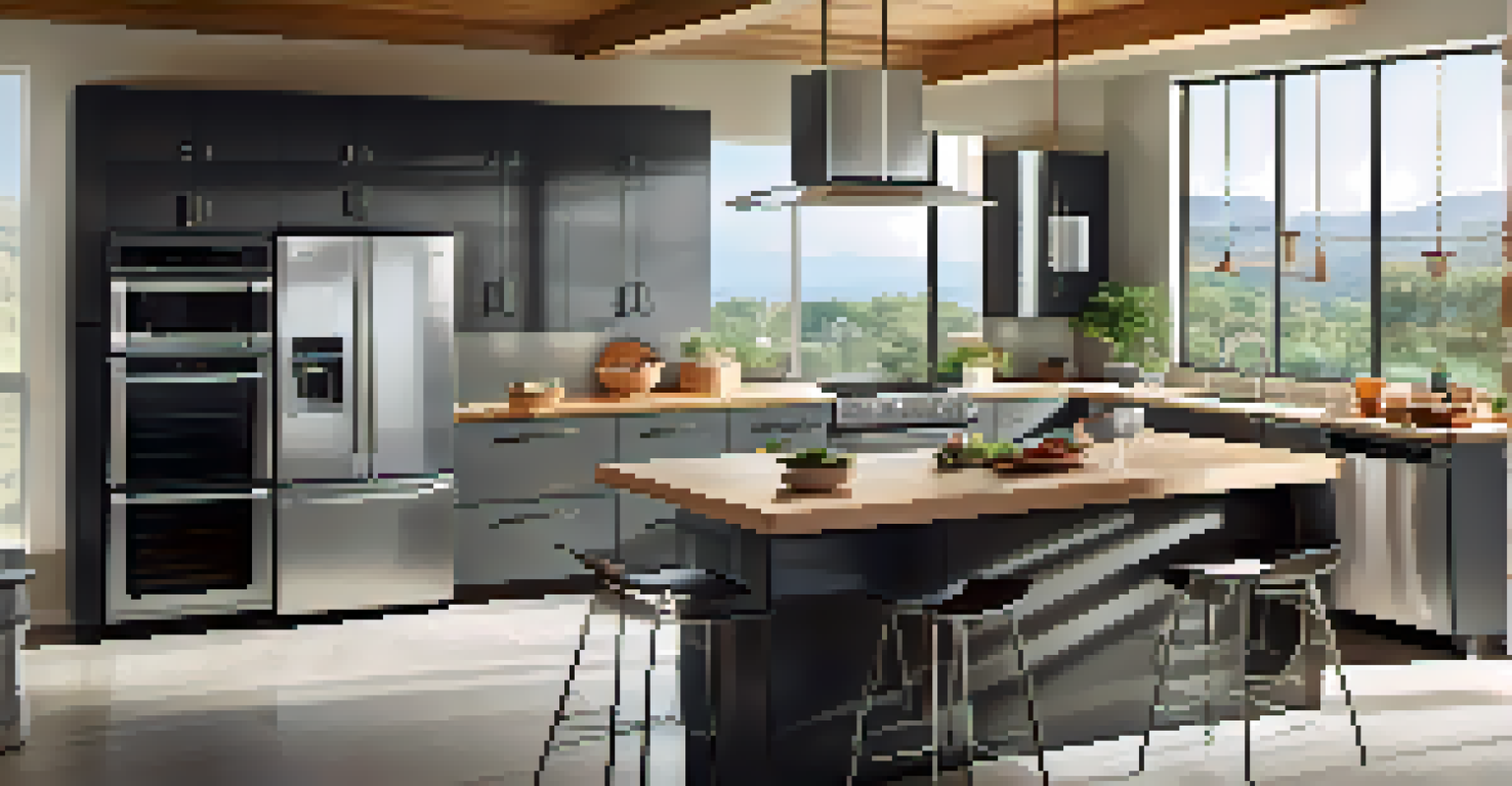Energy-Efficient Home Renovations: A Homeowner's Checklist

Understanding the Benefits of Energy-Efficient Renovations
Energy-efficient renovations not only help the environment but also reduce your utility bills. By making smart upgrades, you'll notice a significant decrease in energy consumption, which can lead to substantial savings over time. It's like finding extra cash in your pocket every month—who wouldn’t want that?
The greatest threat to our planet is the belief that someone else will save it.
Moreover, these renovations can boost your home's value. Prospective buyers are increasingly looking for energy-efficient features, so investing in them can make your property more attractive in the real estate market. Think of it as enhancing your home’s resume; the more appealing it looks, the easier it is to sell.
Lastly, energy-efficient upgrades often lead to a more comfortable living environment. Improved insulation and efficient heating and cooling systems can create consistent temperatures throughout your home, making it a more enjoyable space to live in. After all, a cozy home is a happy home!
Start with an Energy Audit for Your Home
Before diving into renovations, conducting an energy audit is essential. This process helps identify where your home is losing energy and which areas could benefit from upgrades. Think of it as a health check-up for your house, pinpointing what needs attention.

You can hire a professional auditor or do a DIY assessment using online resources. Look for drafts around windows and doors, check your insulation, and evaluate your heating and cooling systems. Just like a doctor’s recommendations, this step will guide your renovation priorities.
Energy Savings Boost Home Value
Investing in energy-efficient renovations not only reduces utility bills but also enhances your home's market appeal.
Once you have the results, you’ll have a clearer idea of the most urgent upgrades. This focused approach not only saves time but ensures you’re investing in the right improvements that yield the best return. With a roadmap in hand, you can proceed with confidence!
Insulation: The Backbone of Energy Efficiency
Upgrading your insulation is one of the most impactful energy-efficient renovations you can make. Proper insulation keeps your home warm in winter and cool in summer, reducing the need for heating and air conditioning. It’s like wrapping your house in a cozy blanket!
Energy conservation is the foundation of energy independence.
Consider adding insulation to your attic, walls, and even floors if necessary. If your home is older, it might not have adequate insulation, leading to significant energy loss. Investing in high-quality materials can make a noticeable difference in comfort and cost savings.
Additionally, don’t forget about sealing gaps and cracks around windows and doors. This simple step can prevent drafts from sneaking in and help maintain your home’s temperature. Small fixes can lead to big changes, making your home more energy-efficient.
Energy-Efficient Windows: A Bright Idea
Replacing old windows with energy-efficient models can drastically improve your home’s energy performance. Modern windows come with double or triple glazing, which provides better insulation than single-pane options. Think of them as the sunglasses your house needs to block out unwanted heat and glare!
Look for windows with low-E (low emissivity) coatings that reflect heat while allowing light in. This can help maintain a comfortable indoor temperature without straining your HVAC system. The added natural light also brightens up your living space, creating a more inviting atmosphere.
Conduct an Energy Audit First
Starting with an energy audit helps identify priority areas for upgrades, maximizing the effectiveness of your renovations.
While the initial investment may seem high, the long-term savings on energy bills and increased home value make it worthwhile. Plus, many energy-efficient windows qualify for tax credits or rebates, giving you extra incentive to upgrade. It’s an investment that pays off in more ways than one!
Upgrade to Energy-Efficient Appliances
Swapping out old appliances for energy-efficient models can lead to significant energy savings. Look for the ENERGY STAR label, which indicates that the appliance meets strict energy efficiency guidelines. It’s like having a personal trainer for your home, helping it operate at its best!
From refrigerators to washing machines, energy-efficient appliances use less energy and water, reducing both your bills and environmental impact. For example, a modern dishwasher uses less water than washing dishes by hand, proving that convenience can also be eco-friendly.
Although these appliances may come with a higher price tag upfront, they save money in the long run through lower energy consumption. Additionally, many utility companies offer rebates for purchasing energy-efficient appliances, making them even more accessible. Investing in these upgrades is a win-win for your wallet and the planet.
Consider Renewable Energy Sources for Your Home
Integrating renewable energy sources, like solar panels, can significantly reduce your reliance on traditional energy. By harnessing the power of the sun, you can generate your own electricity and even sell excess energy back to the grid. It’s like having your own mini power plant right on your roof!
Beyond solar panels, consider other renewable options like wind turbines or geothermal heating if they’re suitable for your area. These systems can provide substantial long-term savings and reduce your carbon footprint. Imagine powering your home with nature’s resources—how cool is that?
Embrace Smart Home Technology
Integrating smart home devices can optimize energy use, making your living space more efficient and convenient.
Before making the leap, research local incentives and financing options that can help offset installation costs. Many states offer tax credits or rebates for renewable energy installations, making it easier to invest in a sustainable future. Transitioning to renewable energy is not just good for your home; it’s a step toward a healthier planet.
Smart Home Technology: Control at Your Fingertips
Incorporating smart home technology can enhance your home’s energy efficiency in a big way. Smart thermostats, for instance, learn your habits and adjust heating and cooling accordingly, ensuring you’re not wasting energy when you’re away. It’s like having a personal assistant who knows exactly what you need!
You can also connect smart lighting systems that adjust based on natural light levels or occupancy, further reducing energy consumption. These little tweaks not only save energy but also add a layer of convenience to your daily life. Imagine coming home to a perfectly lit house without having to flip a single switch.

While the tech can seem overwhelming at first, many devices are user-friendly and integrate with your smartphone. Over time, you’ll find that managing your home’s energy use becomes second nature. Embracing smart technology is a modern way to enhance comfort while promoting sustainability.
Creating a Long-Term Energy-Efficient Plan
As you embark on your energy-efficient renovation journey, it’s essential to create a long-term plan. Prioritize upgrades based on your energy audit findings and budget, making a timeline for when each project will be completed. Think of it as a personal roadmap guiding you toward a more sustainable home.
Consider setting goals for energy savings, such as reducing your utility bills by a certain percentage over the next year. This gives you something tangible to work toward and motivates you to continue making improvements. Just like training for a marathon, having a goal keeps you focused and committed.
Finally, remember to regularly assess your progress and make adjustments as needed. The energy-efficient journey doesn’t end with renovations; it’s a continuous process of improvement and adaptation. By staying proactive, you’ll ensure your home remains a model of energy efficiency for years to come.